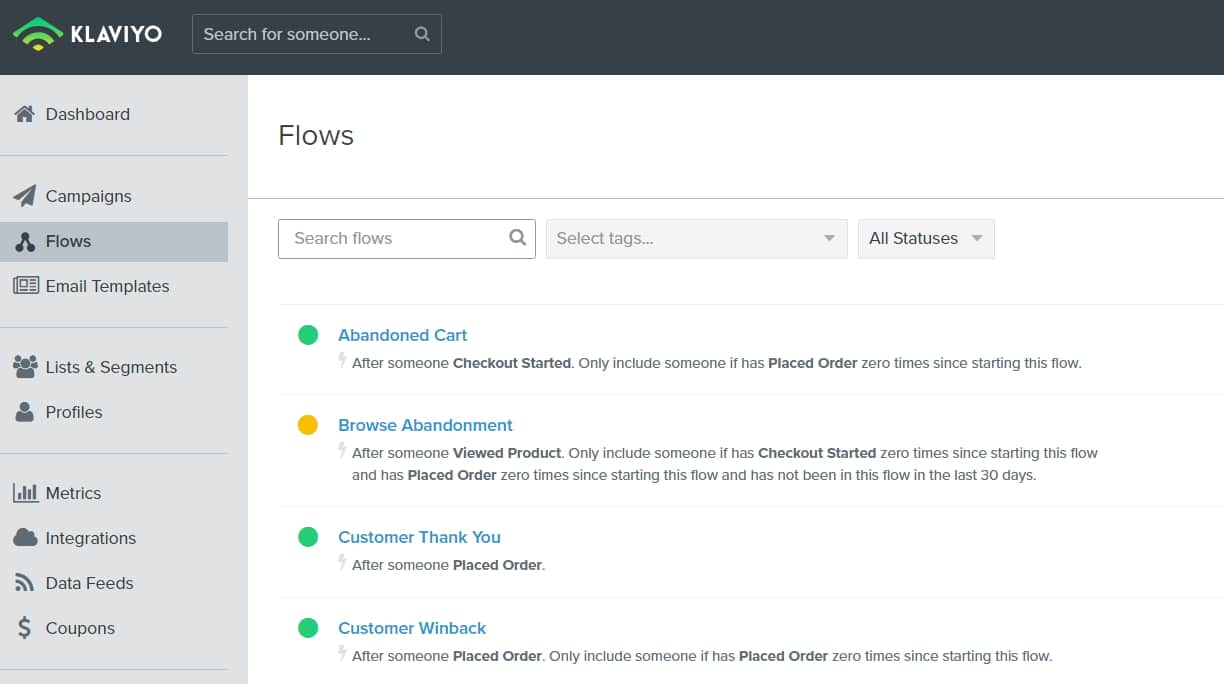Catch any marketer working for a DTC eCommerce brand over a cup of coffee, and you’d know that the laptop never leaves their hand! Their noses are always to the grind, trying to bring the best products at amazing prices to their intended audience while managing to keep a cut for themselves. Sounds like a tough job? Well, it sure is!
Add to that the pressure of crafting that perfect email marketing strategy that converts as amazingly in reality as on the projection boards. Yeah, it can have the best of us in a tizzy, scrunching up our foreheads like the neighbor’s pug! Fret not, as we present an all-inclusive guide on email automation for eCommerce pundits. Stay tuned, folks!
By the time we wrap up, you will be familiar with the basics of email automation, how to automate campaigns, the benefits of the whole exercise for your business, and an insight into some of the best e-commerce email marketing automation practices. Let’s hit the throttle now, shall we?!
Decoding the basics of email automation
When you automate your email flows, you ensure that the intended information, product catalogs, and steal deals reach the right audience at the right time. Therefore you set yourself up for greater conversions and, consequently, higher ROIs.
This allows you to set flows for separate triggers, such as an abandoned cart, order confirmation, browsing abandonment, etc., without actually having someone hit the “Send” button on the requisite email every time someone leaves the cart without placing an order, etc.
eCommerce email automation not only saves you a lot of time but also frees up resources to work on other pressing tasks. Let’s now move over to the difference between email campaigns and flows.
The distinction lies in their purpose and execution. With campaigns, the idea is to strike up a conversation with your subscriber base. Campaigns can be of different kinds based on your objective, which can vary from nurturing leads, engendering brand and product awareness, improving traffic to your webshop, or increasing revenue. Once the objective is clear, you can choose your specific campaign ~ new product announcements, direct emails, content or informational emails, or seasonal sale announcements.
On the other hand, flows are sequential emails that are automated to be sent out in response to certain conditions or triggers. For example, if someone signs up for a newsletter, a free e-book, or a white paper, a welcome email is automatically sent out to express the brand’s gratitude and a warm welcome on account of the new member in the house. Flows go by different names, such as automation and autoresponder, depending on the terminology of the ESP you subscribe to.
The Undeniable Benefits of Email Automation
The time benefits are a no-brainer, but there is a whole well of other advantages that come with setting up email marketing automation for e-commerce. Let’s delve into those benefits.
1. Enhanced marketing team efficiency: In today’s fast-paced era, time is money, and improved efficiency of your marketing team translates into more streamlined strategies that ultimately beget better results.
Automation will not only make sending out personalized emails to subscribers easier but also make the data-crunching process a whole lot simpler. With the easy-to-peruse metrics at your fingertips, it can be easier and faster to select which campaigns are making the most impact and the ones that could do with some tweaking.
2. Translate leads into tangible sales: Every time a customer browses through the wares on display or signs up for a newsletter, you gain a lead. Even if they are probably just window shopping, adding items to their cart, and then leaving the website, you can still remind them of the awesomeness awaiting them in their cart with cart abandonment flows.
3. Keep existing/current customers engaged: Let’s face it, your existing customers are the ones responsible for the credit notification in your company’s account. In other words, you cannot simply assume that they will always hang around without consistently engaging with them and offering them value-added services, discounts, and products. With automated flows, you can schedule content emails containing links to blogs or collection pages so that they know what’s new with their favorite brand.
4. Infuse a touch of personalization: No one likes to hear from a bot. Your email list may be large or not-so-large, yet it’s important to address every subscriber by their own name and offer bespoke product suggestions. An automated email workflow can add that personal touch to every email that goes out to a particular subscriber, giving them the impression that they are cared for and that the brand values their association with them.
5. Efficiently level up your marketing strategy: As you scale your business, the number of subscribers in your email list is also expected to increase. If you attempt to manually send out emails to each new subscriber, you’d probably have little time for anything else. With automation tools, every new subscriber can be integrated with the system and receives triggered emails right away from the moment they hit subscribe! How cool is that?
The Step-By-Step Guide To Automating Email Workflows
Step 1: Begin with finalizing the most suited Email Marketing Automation Tool
While there are numerous email automation tools such as Klaviyo, Mailchimp, Drip, Campaign Monitor, etc. available for businesses to set up email workflows, it makes sense to invest in the one that is best suited for your unique e-commerce business objectivs. Presenting a screenshot of one such tool, for DTC brands with its complex sets of triggers that can be effectively deployed.

Step 2: Specify your email marketing automation strategy
Having your goals, all chalked out beforehand is quintessential to the success of your email marketing automation strategy. Whether the end goal is to get more click-throughs, higher traffic, increased signups, or ultimately more sales, you need to have a clear picture and ensure that everyone in the marketing team is on the same page as you. Here are some elements that you must think about;
- The kind of email workflows you would like to set up for your business
- The art and science of segmenting your audience perfectly
- Deciding the email cadence of each campaign
- And last but not least, email campaign design
Step 3: Segment your subscriber lists
Segmenting your audience helps at various stages. Right from personalization to re-engaging those who might have lost interest, this step can help you win hearts and minds!
While there are many, you can consider taking the following metrics into account to form a basic segmentation framework.
- Audience preferences
- Demographics
- Shopping behavior ~ purchase and browsing history
- Position in the sales funnel
Step 4: Begin with the process of setting up workflows
There is a whole range of criteria you can set up workflows for based on the action that someone takes on your landing page, such as welcome emails, abandoned carts, etc. Each workflow consists of a fixed number of emails, usually not less than three, sent out at specific time intervals to the intended subscribers.
Step 5: Specify automation triggers
Triggers that set a pre-programmed workflow into action are usually based on a preset event, user behavior, or action. So, for instance, if someone has not engaged with your brand for a specified time period, a re-engagement workflow can be triggered to ensure continued association with the brand.
Step 6: Analyze data for optimized future campaigns
Many email automation software allow for A/B testing, which allows marketers to test which version of the same email performs better for a specific target audience. One could also analyze metrics such as click-through rates, bounce rates, and email open rates to understand what works in your favor and identify factors that don’t.
An Insight Into Email Automation Best Practices
Here are some best practices that you can keep in mind while setting up your email workflows;
- Send emails only to those who have signed up to receive emails from you
- Know your audience, and be privy to their likes and dislikes, demographic information, and browsing history.
- Build a rapport with your subscribers
- Ensure that you send only relevant emails
- Regularly clean your subscriber lists to remove disengaged subscribers
Summary
Whatever your needs and goals may be, you can boost your return on investment with multiple automated emails for e-commerce such as welcome series, new customer acquisition, post-purchase, etc. If you would like professionals to set up the best e-commerce email automation, you can get in touch with the experts at Email Uplers.



Naina Sandhir
Latest posts by Naina Sandhir (see all)
Broadcast Emails- Best Practices and Pitch-Perfect Examples to Help You Ace Them!
Key Highlights of Salesforce Summer ’23 Release for Marketing Cloud